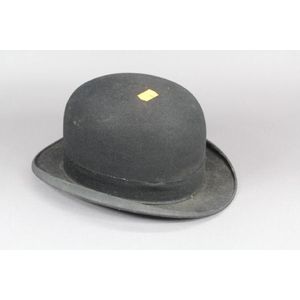Louis XVI Marquetry Occasional Table
Louis XVI style marquetry occasional table 19th century, the circular top with cross motif, above a single drawer, raised on four tapered legs, height 70 cm diameter 40 cm. provenance: The Collection of Mr and Mrs Matthew Handbury, Sydney
You must be a subscriber, and be logged in to view price and dealer details.
Subscribe Now to view actual auction price for this item
When you subscribe, you have the option of setting the currency in which to display prices to $Au, $US, $NZ or Stg.
This item has been sold, and the description, image and price are for reference purposes only.
- Tapered Legs - found on both cabinet and country-made furniture from the 18th to the later 19th centuries. The leg sometimes terminates in a spade foot, though on most country furniture the taper continues for the whole length of the leg. The important thing to remember is that the taper ought only to be on the inside face of the leg, and the outer face should be straight and square. Some legs were made where both sides tapered, but in such a case the taper ought to be the same on both the inner and outer faces of the leg. Where the inside of a leg is straight, with only the outer face tapering, there is every reason to be suspicious
- Provenance - A term used to describe the provable history of an antique or work of art, and thus an additional aid to verifying its authenticity. Provenance can have an inflating effect on the price of an item, particularly if the provenance relates to the early settlement of Australia, a famous person, or royalty. Less significant are previous sales of the item through an auction house or dealer.
- Marquetry - In marquetry inlay, contrasting woods, and other materials such as ivory, shell and metal are inlaid either as panels or in a single continuous sheet over the surface of the piece. The design may be straightforward, such as a shell pattern or a basket of flowers, or it may be infinitely complex, with swirling tendrils of leaves, flowers and foliage, such as one finds, for example, in the "seaweed" patterns on longcase clocks of the William and Mary and Queen Anne periods.
This item has been included into following indexes:
Visually similar items

Coalport 'The Barn owl' 120/350
Sold by
in
for
You can display prices in $Au, $US, $NZ or Stg.

Chinese carved ivory lidded box 9 cm diameter approx.
Sold by
in
for
You can display prices in $Au, $US, $NZ or Stg.

Interesting 9ct gold multi-strand bracelet, weight 19.5 grams, size 20 cm length
Sold by
in
for
You can display prices in $Au, $US, $NZ or Stg.

Sold by
in
for
You can display prices in $Au, $US, $NZ or Stg.
